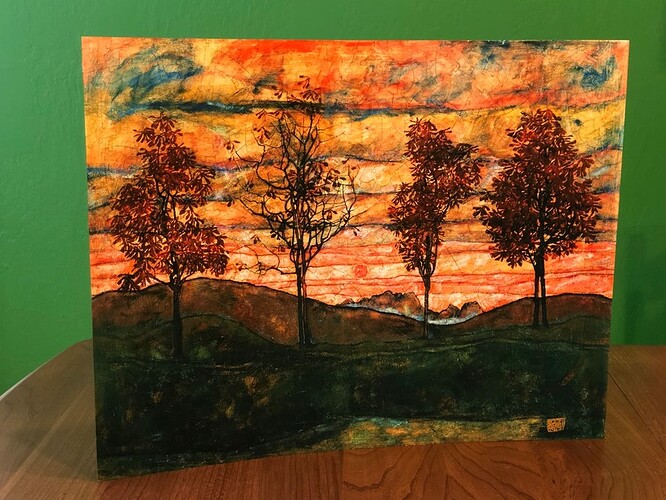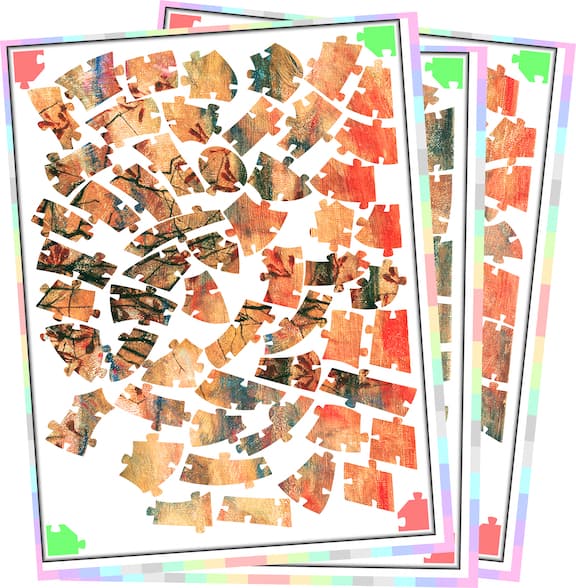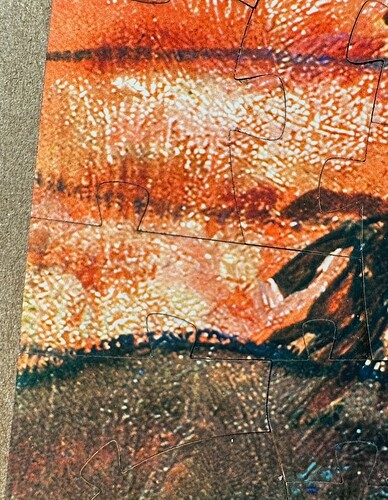My own opinion is that picture jigsaws are more fun when the pieces fit nicely, without wiggle, without visible gaps, and allowing sections of puzzles to be easily picked up and rearranged.
The good news is that it can be done. Here’s one with cuts adjusted for kerf, snugly fitting for easy handling, as the video shows. It’s made of matte photo prints mounted on 1/16" plywood.
Obviously, the kerf adjustment can be tuned to give the desired level of snugness or looseness. This one is snug enough to stand up by itself, if bent into a slight curve:
The only way to adjust for kerf is to cut the pieces individually. The above 24"x19" puzzle was cut from 12 letter-size sheets of individual pieces:
For it to appear seamless, the alignment has to be accurate to around 0.2mm (depending on the photo and the pieces). The three pieces shown below were actually cut from different sheets:
Additionally, it’s cut upside-down, so that there’s zero kerf on the printed side (the wider part of the kerf is on the back).
It’s hard to tell from the photo, but the cut lines are much less noticeable than in puzzles cut the ordinary way. On the darker areas they pretty much disappear.
The bad news is that I haven’t figured out how to make the process more efficient. For small puzzles it’s not bad. For a larger puzzle like this, cut from 12 letter-size sheets, it takes me a few hours and at least $70 to make one copy.
The labor cost is partly due to deliberate tradeoffs, choosing quality of appearance over efficiency, especially:
-
Cutting upside down, for reduced visible kerf. This makes masking essential.
-
Using home inkjet photo paper, instead of lab-printed photos, because the edges are less noticeable on that paper. Then you need to use the right kind of photo paper, or else worry about tearing the photo when you remove the masking.
The materials cost mostly comes from:
- Photo print: $1.30 per sheet
- 8x12x1/16" Basswood plywood: $2 per sheet
- Adhesive sheets (incl. extra used for demasking): $1.30 per sheet
- Depreciation on Glowforge & air filter: $1 per sheet (is that a reasonable guess?)
I’m working on a tutorial, but my guess is that most people won’t find it worth the effort, except those (like me) who have a pet peeve about sloppily-fitting laser jigsaws.


